Risk Use Insurance
-
- INSIGHTS: Transportation Industry Outlook 2019 Maritime Logistics Professional, Mar/Apr 2019 #14
The driver shortage will once again shape the trucking industry in the coming year. For ocean shipping, that’s a real problem. Any transport mode is only as good as the one that immediately follows or precedes it in the intermodal supply chain.
For trucking, the outlook hasn’t changed much in the last two years: Too much freight and not enough drivers to haul it. It’s both the best and worst of times all at once. True, this means the U.S. economy is still very healthy. But, it also means that carriers struggle to recruit and retain quality drivers – and that can be frustrating. More of the same can be expected in 2019. Here are a few predictions:
The driver shortage continues at full speed: As the critical truck driver shortage persists through 2019, new consequences will surface. For one, good drivers will see salary increases of as much as 20 to 50 percent over what they were paid just five years ago. The shortage will drive significant growth for last mile carriers to the point that Amazon will begin hiring their own dedicated fleet. Driver recruiting efforts will ramp up to include a push for ex-military personnel as well as government lobbying to lower the commercial driving age to 18. Fleet carriers will put pressure on insurance companies to take a risk on these non-traditional, younger recruits.
Fatalities decrease, severe crash litigation increases: While fatalities per mile driven have decreased in the last decade, there’s been an increase in the amount of severe crashes at the same time. This contradictory data can be attributed to increased speed limits and use of safety equipment in vehicles. This has led to more litigation, which has caused severe bodily injury settlements to rise from an average of $1.2M to approximately $2.8M per claim. Having taken the insurance industry somewhat by surprise, these increased costs will be passed onto the fleet operator in higher premiums and deductibles in 2019.
Long wait times and chassis condition at shipping terminals: Drivers are still frustrated by long wait times and chassis that could have problems passing a roadside inspection. This will continue to be compounded in 2019, and beyond, as drivers are not compensated on an activity basis and therefore, they feel some container movements are barely worthwhile. As the number of ports able to take on mega ships expands, the need for more chassis is warranted to pick up and deliver more containers. Port operators are attempting to address the congestion by increased gate hours, automated gates and appointment systems. Chassis owners can help by installing GPS to better monitor its equipment location at the ports and on the road. Other initiatives include telemetry systems for the chassis that monitors lights, brakes and tire conditions that can help drivers address possible equipment issues before a breakdown happens on the road. With ELD’s closely tracking time and movements, any significant loss of time can have an impact on pay and push drivers to look for fleets with their own chassis or an improved client base.
Championing compliance reduces risk: Rising insurance and litigation costs will put increased pressure on fleet carriers to reduce crash frequency, avoid litigation and improve DOT compliance. The result? ISS scores, drivers, maintenance and ELD equipment will be a major focus for insurance carriers in 2019. Best-in-class fleet carriers that champion compliance will turn to alternatives like member-owned insurance captives and risk retention groups, which can put the brakes on premium costs.
Independent Contractor Status: The use of independent contractors as truck drivers across the US has come under increasing public scrutiny and legal threats. The California State Supreme Court ruled that any independent contractor must be able to pass an “ABC Test,” that sets an incredibly high bar to avoid an employee-employer relationship. Other states and the federal government are also looking closely at employee misclassification with several claims resulting in multi-million dollar settlements. Additionally, the January, 2019, Prime vs. Oliveira decision in which the Supreme Court unanimously upheld the right of owner/operators to have employment conflicts heard in a court of law, as opposed to forcing it into arbitration, will not only increase the number of employment issues brought to the courts, but will significantly increase industry litigation costs as a result.
2019 Growth and Beyond
Eventually the current freight capacity crunch will resolve itself. Whether it will be in 2019 or beyond is the question that remains unknown. What is certain is that when supply and demand converge, the profitability of the trucking industry will slow, and there will be a real conflict between insurance underwriting and the ability of fleet operators to pay increased premiums. At that time, trucking lines that have failed to control their CSA scores and manage drivers appropriately will face significant insurance cost increases without the additional revenue from increased rates. Until then, the industry will enjoy continued growth.Michael Birge is president of Hub International Transportation and Steve Bojan is Vice President of Fleet Risk Services for Hub International.
This article first appeared in the MAR/APR 2019 edition of Maritime Logistics Professional magazine.
-
- Marine Insurance & the “Human Factor” Maritime Reporter, Nov 2014 #44
Insurance underwriters of diversified maritime exposures see a wide variety of approaches taken by vessel operators to manage human error to control risk. They have found through experience that the majority of hull and liability claims can be traced to a breakdown in preparedness and decision-making
-
- Logistics and Warehouse Insurance: Understanding its Complexity Maritime Reporter, Apr 2015 #28
against a terminal operator if their goods are damaged. Coverage Gaps Despite the gray coverage areas, potential gaps in insurance protection and risks onsite at marine warehouses and terminals, many marine operations fail to identify the correct insurance coverage necessary to protect them. These
-
- Surveys and Towing Vessels in a Post-SubM World Marine News, Mar 2017 #38
And make sure that your marine surveyor does this as well. The game didn’t just change for you; but for the surveyors as well. Pay attention to details. Risk Some insurance companies have begun to ask that surveyors to look at risk factors beyond the vessel. Today, in addition to detailing the structure
-
 )
October 2025 - Maritime Reporter and Engineering News page: 9
)
October 2025 - Maritime Reporter and Engineering News page: 9to carrier defenses, including governmental action, force majeure, or inspection delays, highlighting the importance of documentation and proactive risk management. Statutory and Regulatory Oversight Shippers operate within a framework of statutory over- sight, contractual obligations, and commercial
-
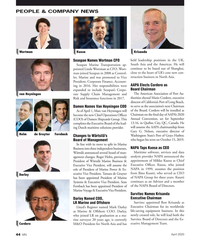 )
April 2020 - Marine News page: 44
)
April 2020 - Marine News page: 44include Seaspan’s Corpo- The American Association of Port Au- van Heyningen rate Supply Chain Management and thorities elected Mario Cordero, executive Risk and Insurance functions in 2017. director of California’s Port of Long Beach, to serve as the association’s next Chairman Damen Names Van Heyningen
-
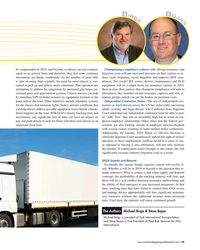 )
Mar/Apr 2019 - Maritime Logistics Professional page: 15
)
Mar/Apr 2019 - Maritime Logistics Professional page: 15B B O I R J G A E N be compounded in 2019, and beyond, as drivers are not compen- Championing compliance reduces risk: Rising insurance and sated on an activity basis and therefore, they feel some container litigation costs will put increased pressure on ?eet carriers to re- movements are barely worthwhile.
-
 )
March 2015 - Maritime Reporter and Engineering News page: 74
)
March 2015 - Maritime Reporter and Engineering News page: 74cers Email: [email protected] * Must have valid TWIC & Merchant Marine Credential Web: http://www.Click2Apply.net/82zspnv (MMC) to stand watch Requirements: Risk & Insurance Manager * Recent sea experience required along with medical Job Location: USA, Federal Way, WA clearances * TWIC requirement or ability
-
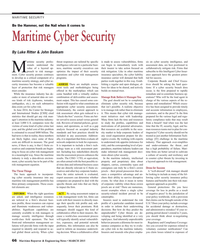 )
March 2015 - Maritime Reporter and Engineering News page: 66
)
March 2015 - Maritime Reporter and Engineering News page: 66, are best positioned to value of a layered ap- ness, maritime security executives can their insurer to take action focused on collaboratively mitigate risk. Firms that Mproach to risk manage- optimize the impact of their security risk mitigation. Like in other maritime subscribe to this Intelligent Cyber
-
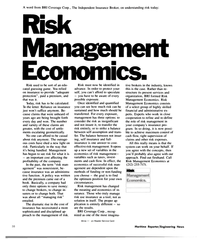 )
January 15, 1981 - Maritime Reporter and Engineering News page: 36
)
January 15, 1981 - Maritime Reporter and Engineering News page: 36optimum position for your own circumstances. Risk management has changed the meaning and economics of in- surance. Those who truly manage risk use insurance as a tool, not as solution in itself. The proper ap- plication is entirely different — so are the results. BRI Coverage Corp., recog- nized
-
 )
February 15, 1981 - Maritime Reporter and Engineering News page: 3
)
February 15, 1981 - Maritime Reporter and Engineering News page: 3optimum position for your own circumstances. Risk management has changed the meaning and economics of in- surance. Those who truly manage risk use insurance as a tool, not as solution in itself. The proper ap- plication is entirely different - so are the results. BRI Coverage Corp., recog- nized
-
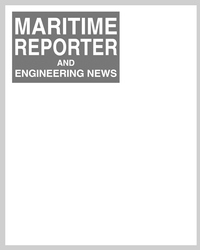 )
October 2009 - Maritime Reporter and Engineering News page: 49
)
October 2009 - Maritime Reporter and Engineering News page: 49the globe. WISTA Elects Chalkidis Vera Chalkidis, commercial director of Athenian Sea Carriers has been chosen to succeed Marita Scott of NorthEdge Risk Services, Bergen, who has held the presidency for four years. Shipbuilding Center of Excellence VT Halter Marine won a second contract from OSG
-
 )
September 2006 - Maritime Reporter and Engineering News page: 82
)
September 2006 - Maritime Reporter and Engineering News page: 82Employment/Recruitment Insurable Risks Manager Job Location: USA, Chantilly For more than 100 years Rolls-Royce has been a global leader in pioneering gas turbine technology for aerospace, power generation, and marine propulsion. Our name, world famous for its reputation for engineering excellence, also
